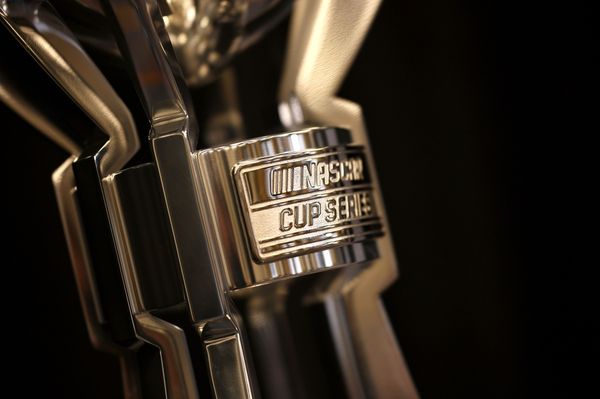
Tatjana Maria entered the court for her first match at Queen’s Club in a crisis. It had been two months since the 37-year-old had last won a match and in that time she had registered nine consecutive defeats. Not even a return to her favourite surface, grass, shifted her downward trajectory: her previous match, at the Birmingham Open, ended in a straight-sets defeat by an opponent ranked No 229.
Just over a week later, Maria stands as the first women’s champion at Queen’s Club for 52 years at the end of an extraordinary giantkilling run as she bamboozled Amanda Anisimova, the 8th seed and world No 15, 6-3, 6-4 to win the biggest title of her enduring career.
Maria, a qualifier, is the oldest WTA 500 champion in history, an achievement she pulled off by defeating four top-20 opponents in a row. “It means a lot to me, because actually, I’m 37 years old and I won this trophy today,” she said. “In the past, people were always saying: ‘Oh, now maybe it’s time. You are too old. You are …’ Whatever reason they say sometimes. But actually, I’m a good example that even at my age you still can win big trophies.”
The German, who is coached by her husband, Charles-Édouard Maria, continued: “I’m super proud of myself that I could win this tournament, because actually, I always believed in it, and my husband too. That’s also why we kept going, because there was always this belief that I can win big tournaments and that I can do great things on the court. I’m really, really proud of this.”
Despite her poor form and modest ranking of No 86, Maria has significant pedigree on grass, a surface her game is built for, and in 2022 she reached the semi-finals at Wimbledon. In an era dominated by destructive, flashy shotmakers, Maria has mastered the art of junk balling – using her deep toolbox of shots to rob opponents of the pace that most players feed off.
On grass, Maria predominantly slices off both forehand and backhand, shots that bounce excruciatingly low on the skidding surface, forcing players to hit the ball far out of the preferred strike zone and generate their own pace. She also uses her delicate hands well around the net.
In her seven-match march through the draw, Maria has found herself up against some of the biggest ball-strikers on the tour and expertly neutralised each of them in kind. As was the case for the reigning Australian Open champion, Madison Keys, and Elena Rybakina, the 2022 Wimbledon winner, Anisimova looked extremely uncomfortable from the beginning, spraying unforced errors and unable to find her range or rhythm. Maria sliced her 23-year-old opponent to pieces, constantly drawing her into uncomfortable positions on the court while exposing the one-dimensional nature of the American’s game. She also served and defended extremely well.
“Just not something you’re used to,” Anisimova said of Maria’s playing style. “I mean, most of my matches, I’m not getting a slice after every single ball. It’s definitely different, but everyone has their own way of playing. It’s just something you need to adjust and adapt to.”
After closing out a stellar win, Maria immediately sprinted over to her player box, where she embraced her husband and their daughters, 11-year-old Charlotte, an aspiring player herself, and four‑year‑old Cecilia. One of Maria’s biggest goals is to one day play doubles professionally with Charlotte.
“She will turn 12 at the end of the year, and you can start to play on tour when you’re 14,” Maria said. “So I have a few more years to go, but it would really be my goal to do this, because I would love to play with her on the tour for doubles. She’s been on tour since she’s three months old, actually. It’s her dream. And if my body holds, if I really enjoy playing tennis, I would love to keep going and to play doubles with her.”
Fifty-two years after professional women’s tennis players last populated these courts, Maria’s victory marked the end of a special homecoming. Considering the success of the men’s event, this tournament began with high expectations yet it has exceeded them. Significant crowds have been present all week, with a total of 62,000 visitors passing through the gates, a number that few stand-alone WTA events can command today. A return to a historic venue also meant greater exposure, with a strong showing on BBC One and Two throughout the week.
As with the ATP Queen’s Club event, which begins on Monday and has long been a player favourite, almost every player has spoken in glowing terms about the tournament and the stewardship of its tournament director, Laura Robson. In its first year, it has established a strong base to build on as it seeks to establish itself as one of the leading events of its stature on the tour.







